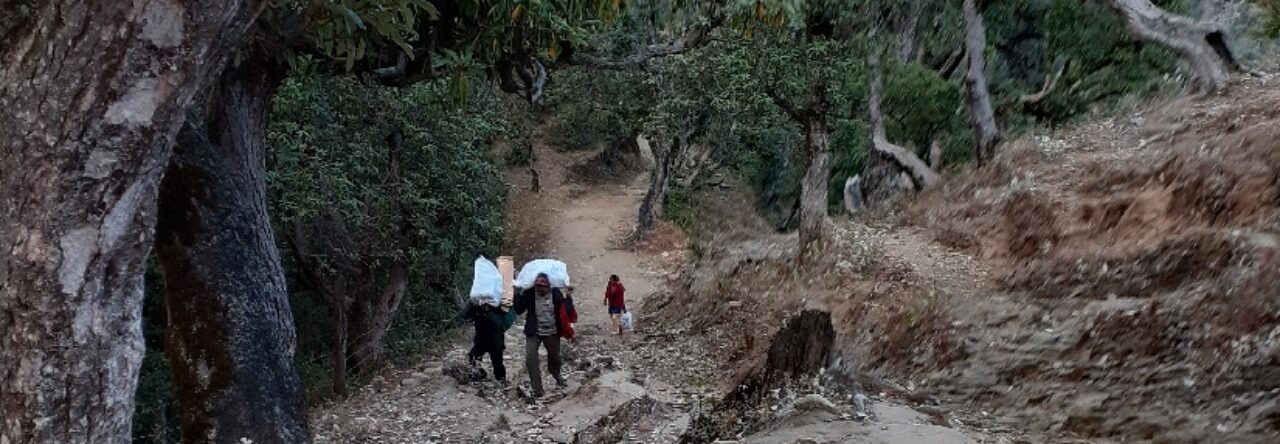Introduction
Welcome to Dehraduni.com guide on the Char Dham Yatra, a divine pilgrimage in the heart of the majestic Himalayas. In this article, we will take you on an awe-inspiring journey, providing you with all the essential information you need to embark on this sacred expedition. From the significance of the Char Dham Yatra to the best time to visit, we have got you covered. So, let’s begin this soul-stirring adventure!
The Significance of Char Dham Yatra
The Char Dham Yatra, which translates to “the journey to the four abodes,” is a revered pilgrimage for Hindus. It encompasses four sacred sites, namely Yamunotri, Gangotri, Kedarnath, and Badrinath, each associated with different deities. Undertaking this spiritual sojourn is believed to cleanse one’s sins, attain spiritual enlightenment, and seek the blessings of the divine.
Yamunotri: Gateway to the Sacred Yamuna River
Nestled in the Garhwal Himalayas of Uttarakhand, Yamunotri is the starting point of the Char Dham Yatra. Situated at an elevation of 3,293 meters, it is here that the pious Yamuna River originates from the Yamunotri Glacier. Pilgrims visit the revered Yamunotri Temple, dedicated to Goddess Yamuna, and take a dip in the holy thermal springs of Surya Kund.
Gangotri: The Abode of the Sacred Ganga River
Next on our journey is Gangotri, located in the Uttarkashi district of Uttarakhand. At an elevation of 3,100 meters, this sacred site holds immense significance as it is believed to be the birthplace of the holy Ganga River. Devotees offer prayers at the Gangotri Temple, where the mighty river cascades gracefully from the Gangotri Glacier. The spiritual ambience and natural beauty of Gangotri leave an indelible impression on every traveler’s heart.
Kedarnath: Seeking the Blessings of Lord Shiva
As we progress on our pilgrimage, we reach the sacred town of Kedarnath, situated in the Rudraprayag district of Uttarakhand. Perched at an altitude of 3,583 meters, this divine destination is dedicated to Lord Shiva. The Kedarnath Temple, one of the twelve Jyotirlingas, is a marvel of ancient architecture and draws devotees from far and wide. Surrounded by snow-capped peaks, Kedarnath offers a serene and spiritual retreat amidst the lap of nature.
Badrinath: The Final Stop of Divine Grace
Our journey culminates in Badrinath, the holiest of the Char Dhams, located in the Chamoli district of Uttarakhand. Revered as the abode of Lord Vishnu, Badrinath is situated at an elevation of 3,133 meters. The Badrinath Temple, a masterpiece of religious architecture, stands as a testament to the devotion and faith of millions of pilgrims. The tranquil surroundings and the mesmerizing Alaknanda River flowing nearby add to the ethereal charm of this sacred site.
The Best Time to Embark on Char Dham Yatra
The Char Dham Yatra is generally undertaken during the summer months, from April to June, and during the autumn season, from September to November. These periods offer pleasant weather, allowing pilgrims to traverse the mountainous terrain with relative ease. It is advisable to avoid the monsoon season due to heavy rainfall and the winter season due to extreme cold and heavy snowfall.
Planning Your Char Dham Yatra
When planning your Char Dham Yatra, it is essential to make necessary arrangements to ensure a smooth and hassle-free journey. Here are a few tips to help you plan your pilgrimage effectively:
- Research and Prepare:Gather detailed information about the pilgrimage, including travel routes, weather conditions, and accommodation options.
- Pack Wisely:Pack warm clothing, comfortable footwear, essential medicines, and other necessary items for your journey. It is advisable to carry a first aid kit and maintain proper hydration throughout the trip.
- Book Accommodation in Advance:As the Char Dham Yatra attracts a significant number of devotees, it is crucial to book your accommodation well in advance to avoid any last-minute hassles.
- Seek Local Guidance:Interact with locals and seek their guidance during your pilgrimage. They can provide valuable insights into the region, help you navigate challenging terrains, and enhance your overall experience.
- Respect the Environment:The Char Dham Yatra takes you through ecologically fragile areas. It is essential to respect the environment, avoid littering, and follow sustainable practices to preserve the pristine beauty of the Himalayas.
Conclusion
Embarking on the Char Dham Yatra is an extraordinary spiritual endeavor that offers a profound connection with nature, divinity, and one’s inner self. From the serene Yamunotri to the majestic Badrinath, each destination holds its own charm and significance. As you undertake this sacred journey, let your heart be filled with devotion, your mind be immersed in tranquility, and your soul be uplifted by the divine grace that permeates the Himalayan valleys.
